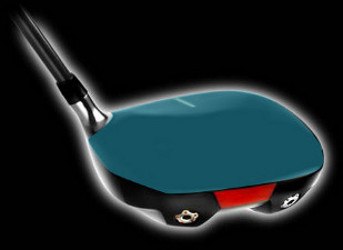
In golf, the term “crown” refers to the top surface of the clubhead. It is the part of the clubhead that is visible when addressing the ball at address.
Here are a few key points about the crown of a golf club:
- Visibility: The crown is the most visible part of the clubhead when a golfer looks down at the club at address. It is the surface that golfers use as a reference point to align the clubface and aim at their target.
- Design and Aesthetics: The crown of a golf club often features various design elements, including branding, logos, alignment aids, or visual enhancements. These features are intended to assist golfers in aligning the clubface accurately and providing visual cues for better shot-making.
- Material: The crown of a golf club is typically made from various materials depending on the type of club. For drivers and fairway woods, the crown is commonly made of lightweight materials such as titanium or composite materials to optimize the club's performance and weight distribution. For irons, the crown is typically made of steel or other metal alloys.
- Impact on Performance: The design and construction of the crown can affect the club's performance characteristics. The crown's weight, thickness, and positioning influence the club's center of gravity, moment of inertia, and overall playability. Manufacturers carefully engineer the crown to optimize these factors for specific club models.
- Maintenance: The crown is an exposed part of the clubhead that is susceptible to scratches, dings, and wear over time. It is important for golfers to take proper care of their clubs, including the crown, by using headcovers during transportation and avoiding contact with hard surfaces or other clubs.
The crown of a golf club plays a crucial role in alignment, visual appeal, and the overall performance of the club. Golfers rely on the crown as a reference point for alignment and use it to position the clubface correctly at address. Manufacturers continue to innovate and refine the crown design to enhance performance, optimize weight distribution, and improve the overall appearance of golf clubs.
The very top portion of a wood or hybrid club.





